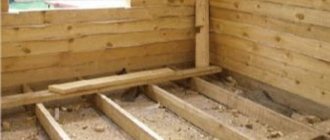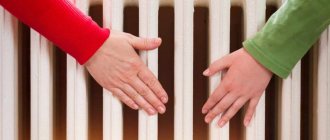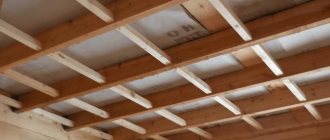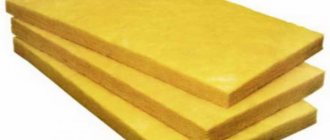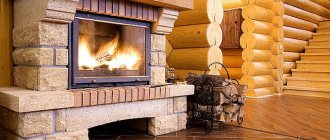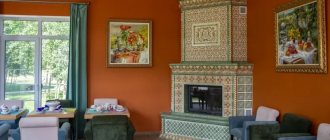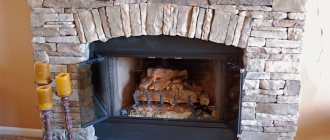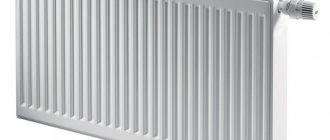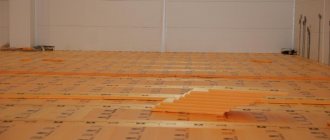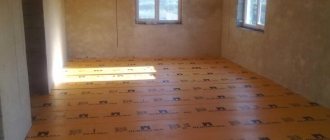A heating structure project is a drawing of a future fireplace design on paper. Before starting masonry, you need to carefully think through all the points and draw up a sketch correctly.
When studying designs of houses with a fireplace, you should know the following parameters:
- what size of foundation to pour under the fireplace;
- room height;
- the strength of a tall brick structure;
- compliance with fire safety measures;
- the appearance of the attractiveness of the fireplace.
A correctly drawn up diagram of a brick fireplace will save time and effort, and will make it possible to carry out the planned construction in the best possible way, as well as avoid difficulties during operation. Brick fireplace projects
Corner fireplace and its uniqueness
Let's look at a detailed drawing of the masonry of a corner brick fireplace and the order with a description. Today there are a huge variety of fireplace designs, but at the moment we offer you a convenient fireplace built into the corner, which can be installed in a small room of at least 12 m2, since there will not be enough oxygen to heat it. To create it, you should find a mason of the 4th - 5th category, so that he has the intricacies of constructing this structure or delve into the intricacies of this process on his own.
It should be remembered that the internal structure of fireplaces is created almost identically, and the combustion of fire in the firebox is the same.
Corner fireplaces have their advantages:
Its peculiarity is that it is not located in the center of the building, but in the corner, and has small dimensions. In addition, it evenly transfers heat energy throughout the room.
Folded neatly, with the smallest deviations and tolerances in construction, the corner fireplace is a heating equipment, carries a certain decorative beauty and shows the status of the owner of this building.
Its disadvantage is the expensive, decorative finishing.
The brick for the construction of this structure needs a high grade; of course, you can lay it out with grade 100, but you should remember that this material is of poor quality for laying it out. In this case, if you build a fireplace from this brick, then, according to fire safety regulations, it should be plastered.
This brand of brick is used for laying out the outer part of the building and for constructing the pipe. And the inside of the firebox is made of refractory bricks.
- Under this brick structure, it is necessary to pour a separate foundation so as not to disturb the main foundation, since the heating device has its own shrinkage.
- It is required to attach a special heat-insulating material between the wall and the future fireplace or lay the masonry in a quarter of a brick, that is, on an edge (it is advisable to lay wire through two rows, for the strength of the structure).
It is advisable to maintain the horizon level, vertical surface and equal diagonal points. With this observance of the rules, the quality of the removal of combustion products to the outside depends.
Laying and preparing the foundation
fireplaces for brick houses usually have a large mass, which is quite difficult for the house to withstand. In this case, you will need to build a separate foundation for the fireplace.
Before starting construction work, it is important to take some tips and nuances as a basis:
- Build the foundation so that it is completely separate from the foundation of the house. There should not be even partial or slight contact between them;
- Make the foundation larger than the overall dimensions of the heating unit itself. It should protrude from each edge by approximately 9-12 centimeters;
- The pit should have a depth of about 50-70 centimeters;
- The foundation will end without reaching the height of the floor by one brick or 60-70 millimeters;
- Masonry work on the stove is carried out only after the foundation is completely assembled and well, completely dry.
Bricks or pre-prepared concrete are used to assemble the foundation. Construction on a concrete base is considered the most difficult. Let's take a closer look at it.
First of all, a pit is dug into which it is necessary to fill with crushed stone in a layer of up to 150 millimeters. After this, the formwork is installed, which must be insulated and treated with special resins or a layer of roofing material. All this must be filled with a solution based on sand and cement in a ratio of 3:1. We level the surface using a building level and cover it with a polyethylene layer and leave it to dry completely for 6-10 days.
Before laying the stove, it is necessary to lay 2-3 layers of roofing felt on the surface of the foundation.
Rectangular fireplace diagram and drawing
Its size is 5x2.5 brickwork order consists of 33 rows
This structure is used without a door on the firebox. The designer, when creating this drawing, used a smoke exhaust through channel, which provides good draft. In this regard, its heat capacity decreases in order to increase the efficiency of this structure. To do this, you should use standard methods, such as laying empty channels along the firebox and chimney.
- The inside of the firebox should be made of refractory bricks that can withstand temperatures of 1100 degrees.
The main massive part of the fireplace is laid out with high-quality solid ceramic bricks, it must correspond to grade 125 and higher, its heating temperature is 750 degrees.
You should remember that refractory and ceramic bricks are prohibited from being tied, but they can be tied using 3 mm wire placed in the seam between the bricks.
Order diagram of a rectangular fireplace 5×2.5 made of brick
When laying out this structure, you should maintain the same thickness between bricks, equal to 5-7 mm. If the material contains flaws, for example oblique corners, then they should be trimmed apart from each other, this way you will achieve the desired thickness of the seam.
Rows should be checked with a level or plumb line to achieve the correct geometric shape of the structure.
This drawing is used by master stove makers, and even with extensive experience, they consult it.
Safety requirements for barbecue ovens
Having conceived the installation of a recreation area with a barbecue on your site, first of all you need to choose a place to place it
At the design stage, it is important to take into account building codes and fire safety requirements for this structure.
To lay the furnace, refractory bricks are used, which are resistant to prolonged exposure to high temperatures and conduct heat.
The oven gets very hot, so wooden structures are not allowed near its back wall. The buildings on the site must be at least 5 meters away from the future installation of the stove.
There should be no flammable materials or substances near the barbecue area.
When arranging a recreation area or summer kitchen, it is recommended to use bricks, tiles, and impregnate wooden structures with a special fire-retardant solution.
The design of the recreation area must be provided with an exhaust hood, and the stove itself must be provided with a well-designed chimney.
The barbecue oven should have an optimal height of the countertop and work areas for ease of cooking on it, and should not have sharp corners or protruding parts.
Mini fireplace drawing
It is recommended to install this heating device in a room of at least 16 m2. It is built into a partition to heat two rooms. To increase heat transfer, the firebox is laid out without refractory bricks. Thus, ceramic brick heats up much faster because it retains less heat capacity of the mass than refractory brick.
- In this case, to protect the firebox from high temperatures, the stove maker uses a metal sheet 3 millimeters thick instead of a stone tooth.
A drawing of a brick fireplace is attached below in the description. If the master has little qualifications in this direction, then instead of the portal arch, you can build a horizontal ceiling. To do this you will need 2 metal corners of the required length.
A positive characteristic of this fireplace is that when purchasing materials for its construction, you spend minimal money.
For construction you will need:
- ceramic bricks 235 pieces;
- clay – 0.12 m3;
- sand – 0.3m3;
- cleaning door – 1 piece;
- stove valve – 1 piece;
- grate – 1 piece;
- choke tubes – 2 pieces;
- steel sheet thickness - 3 mm and size 0.25 m 2;
- roofing material - 1.5 m2;
- cement - 15 kilograms.
“Mini” fireplace and its sequential masonry scheme
To maximize the efficiency of this structure, the side walls of the firebox are laid out at an angle of 25 degrees.
The back wall is laid out in 10 rows in the usual way, that is, horizontally. Starting from the 11th row, the brick extends a quarter at an angle of 30 degrees into the inside of the firebox. With this action, a chimney tooth pass is formed, metal pins are then inserted into the seams between the bricks, and a sheet of metal will be attached to them.
Below is a metal drawing for a firebox.
Due to the absence of fireclay bricks in this building, the space in the room heats up much faster, since side air channels are laid out.
In the lower part there are holes through which cold air enters, and the hot air heated from the fireplace insert through the “ventilators” located in the 13th and 14th rows exits into the room as hot air. Thus, its efficiency increases by 15, 20%
Selecting suitable materials
Wood-burning fireplaces for the home can be assembled from various materials, each of which has its own unique characteristics and features. However, brick is the most popular. It is characterized by strength, fire resistance and durability.
A stove for which the brick will not contain changes in shade, cracks, chips or deformations is the key to a strong and reliable building. The use of bricks with minimal chips and cracks is permissible only for the first two rows, at the moment when you lay out the base of the stove.
The adhesive composition must be homogeneous and free from impurities, lumps and foreign objects.
To assemble the main part of the stove, choose only high-quality red brick. To assemble the firebox and chimney, only fireclay bricks are used. The adhesion solution must include clay and sand. When building a foundation, choose the highest quality cement with a marking of at least M300-400.
For the convenience of masonry work, it is necessary to first soak the red brick in plain water. Thus, the adhesive composition will not be absorbed in large quantities, and the masonry will be as strong as possible.
The brick is soaked until no more air (bubbles) comes out of it when immersed in water.
Medium sized English fireplace
A DIY English brick fireplace is one of the oldest ever built. It is also called a classic open-type brick fireplace.
The parameters include the following features:
- protruding tooth;
- open firebox;
- rear wall of an inclined fracture.
The internal recess of the firebox or hearth is lined with refractory bricks in a mortar containing clay and fireclay chips, as well as a little cement. The external contour of the structure is created from ceramic, solid material.
Elements and diagram of an English-type fireplace
This scheme is relevant for most English-type models.
To build it you will need:
- solid ceramic brick – 350 pieces;
- fireclay bricks – 125 pieces;
- sand-clay solution – 215 kg;
- fireproof mortar – 155 kg.
Below is a detailed drawing of an English heating device 5x3 made of brick
The first four rows of the base are laid out of ceramic bricks of grade 100, then higher quality material of grade 150 and higher is used.
This structure is installed in a room with at least 80 m 3 of total space. Having studied its order, the following points should be noted; note that there is no blower and grate.
If a small room has hermetically sealed windows on all sides, you should install an oxygen supply from the street to the firebox for better combustion.
To create a ceiling for the firebox, a corner of steel and 2 strips of the same material are laid on the twelfth row.
In this design, a cleaning door is provided on rows 16–17, which is installed on the rear wall. This hole limits the placement of the fireplace against a load-bearing wall or wall. In this case, this heating device will not be able to warm the second room.
To maintain the elasticity of the mortar and its natural setting, ceramic bricks should be soaked in a container of water for 5 minutes before laying the masonry structure. Heat-resistant bricks are wiped with a damp cloth to remove dust.
After completing the construction of an English fireplace, you should gradually heat and dry it for 3 weeks, and only after this time has passed, you can fill the firebox up to half. After another month, you can turn on the heating device at full power.
By following this rule, you will allow the solution to set naturally; if it is violated, then you expose your structure to a limited service life. The decision is yours.
Foundation calculation
The foundation must have a laying depth of at least 500 mm. If you install the device in a house that is not constantly heated, then increase this value by 200 mm from the depth of seasonal soil freezing.
Separate the foundation of the heating system from the main foundation with a sand bed. The minimum distance between these structures is 100 mm.
The upper plane of the foundation should not reach the level of the finished floor by 150 mm. The base for the heating device should be 5-10 cm larger from its body on all sides.
Fireplace foundation
Laying a three-level fireplace with a grate
This design is a Russian version, but the main elements are taken from the themes of English and Swedish modeling.
photo of a fireplace consisting of three levels
The draft in the chimney of this building is consistently good, even at a height of three meters, due to the large cross-section of the internal part of the chimney.
It should be remembered that this structure is used in rooms where there is high air humidity.
Drawing diagram of a three-level fireplace with a grate
For masonry you will need the following materials:
- ceramic brick – 620pcs;
- fireclay brick (fireproof) – 220 pcs;
- grate 420x200mm – 2 pcs;
- smoke valve 260x260 mm – 1 piece;
- steel corner No. 40 – 150cm;
- steel corner No. 60 – 100 cm;
- steel strip 4x60 mm – 300 cm;
- clay mortar – 750 kg.
Having studied the above-described procedures and drawings of brick fireplaces for DIY construction, you should know how to calculate all the dimensions of this structure.
Be patient for self-construction or find a skilled stove maker with good qualifications to install this heating equipment.
Additional Information
When making calculations and assembling a fireplace with your own hands, you must take into account the following basics and recommendations:
- Based on the overall dimensions determined at the previous stages, you can easily determine the general parameters of the heating unit, based on which, choose the most suitable room and place for installing the equipment;
- For structures whose mass exceeds 650 kilograms, it is necessary to build an additional foundation;
- The depth of the foundation in a residential building is about 800 centimeters;
- For a summer house or other building in which it is not planned to live all year round, the foundation is buried to a depth at which the soil freezes.
Brick chimneys are more bulky and difficult to maintain
The surface can be faced with decorative bricks
For small corner stoves, it is not necessary to build an additional foundation
The open hearth is complemented by a large shelf located in front of the combustion chamber
Important: to ensure that the house and the heating unit itself do not crack, each foundation is erected and located completely separately, without dressings.
You can make calculations of the necessary materials according to a pre-compiled diagram or an existing order. At this stage, it is important to take into account the following rules:
- The size of your fireplace should be transferred to the selected order, and adjusted in each case individually;
- The approved order with the adjustments made will allow you to accurately calculate the amount of materials, mixtures, bricks consumed and used;
- The thickness of the seams between bricks must be strictly the same;
- Bricks are purchased with a small reserve, amounting to about 9-15 percent of the originally calculated quantity.
By drawing up a detailed drawing with accurate and individual calculations, you can see from your own experience how convenient and effective the use of such a heating unit is.
Dimensions of the fireplace in the house: calculation according to the area
If we talk about creating a fireplace yourself, then you need to know the parameters that it must meet. More specifically, you need to draw up drawings of the firebox, chimney, arrangement and, of course, write down the materials that will be required in the process.
So, for example, to calculate the size of the combustion hole, you need to know the size of your room. The ratio of the firebox to the area of the room should correspond to 1 to 50. For example, if you have established that the area of the room is 25 m2, then we calculate 25 to 50 and get 0.5 m2, this is the size of your future firebox hole. As for the width and height, they are determined by the ratio of 2 to 3. That is, taking into account the size of our firebox, we can calculate that the width will be 80 and the height 63. Incorrect calculations are fraught with impaired draft, smoke in the room and poor heat transfer.
If we talk about the chimney, it depends on the area of the portal; its size should be 15 times smaller. If this is not taken into account when calculating, the carbon monoxide produced will enter the room, and this is life-threatening.
The third thing you need to pay attention to is order. It is necessary to complete the drawings as accurately as possible. We carry out the order on paper and be sure to indicate the materials that will be needed, in what quantity and for what purpose. The order may look like a standard table where all dimensions are indicated. The plan must also indicate depth, width and height. Also on the drawings, the rows should be numbered, in the future this will help you not get lost when laying.
If we talk about material, for example, brick is calculated based on the order, but its exact quantity cannot be determined, only approximate. To determine the exact quantity, you need to take into account how much brick will be used for laying and joining seams, and add all this into an intermediate calculation.
We count materials. In the process of preparing drawings and purchasing materials, you need to know not only the future dimensions of your fireplace, but also how many bricks will be needed to build it. This approach will help calculate all possible costs for laying out an object.
Features of chimney calculations
To prevent the formation of condensation and ensure good draft, it is important to install a chimney whose outlet area should be 1/8-1/15 of the firebox area.
In our case, install a 20x26 cm smoke exhaust duct, which has an area of 0.052 square meters. m, which is approximately 1/10 of the firebox values.
Dimensions of fireplaces with a chimney height of 10m [ads-mob-1][ads-pc-1] It is also important to ensure that the chimney is of sufficient length. Do not make it too high, more than 10 m. This will negatively affect the quality of heating. A chimney that is too low will not be able to remove all combustion products, which will lead to smoke in the room. The optimal size of a chimney pipe is 4-5 m. If you get a large value, install pipes with additional elbows and bends.
The pipeline for carbon monoxide removal should be located at a distance of 25 cm from the main floor beams, load-bearing walls and partitions.
Fireplace calculation: size advantages
Regardless of what model of fireplace is installed, many people perceive it only as a decoration, and, unfortunately, do not even think about why this installation has not changed after so much time. But a fireplace can be an excellent attribute for room ventilation. With its help you can not only ventilate, but also dry the room. Moreover, all these actions can be performed in a very short period of time; many heating devices cannot do this. Fireplaces are an advantageous solution for those rooms that do not have central, constant heating. For example, if you light a fireplace in a country house that is rarely used, you can quickly dry and warm the house.
Please note that all these benefits are only available if all dimensions have been correctly compared.
It is no secret that when installing a fireplace in a house, most people worry first of all about its appearance and location in the room, and only then about such an important fact as its size. In order for the fireplace to perform all its functions at full capacity, you need to correctly make calculations and drawings that will meet all the assigned tasks. Only in this case will the installation work with maximum efficiency.
Benefits of fireclay
The house, which has a solid fuel fireplace, is partially assembled from fireclay bricks. It has a characteristic yellow tint and has impeccable characteristics. It tolerates high temperatures up to 1100 degrees and is not subject to expansion or deformation. The internal elements of the stove are made from it, as it gradually heats up and also slowly releases and distributes heat throughout the rooms of the house.
It is important to remember that cutting such a brick into pieces with your own hands is almost impossible due to its high strength. However, if the need arises, you can buy elements of triangular, square, elongated and any other shape in a specialized store. This will allow you to assemble the arch and other elements of the heating structure.
Calculating a fireplace with an open firebox: important aspects of its creation
When organizing the construction of any fireplace, we must not forget about the important recommendations of experts. The most important thing is to follow all the dimensions, since they play an important role in the characteristics of the fireplace. When you start making preliminary calculations, follow all formulas and take into account possible factors and aspects.
Important aspects include the following:
- The size of the firebox of almost any fireplace should not be less than 25 cm and no more than 40 cm. Such dimensions are considered optimal for household fireplaces with average power. These varieties are the most common. If we talk about a sauna stove, then the width of the firebox can be a little more than 40 cm.
- If you doubt the correctness of the calculations for your fireplace design, you can check them in a simple way. The width of the firebox must match the width of your firebox door.
- Please note that the difference in size will significantly reduce the heat flow, and the fuel will burn much more slowly than it should. Either way, improper sizing will reduce the use and efficiency of your fireplace.
Experts always try to pay special attention to the firebox, because its parameters are the most important indicator. The minimum size of the firebox should be 80 cm, the maximum 100 cm. Very often, when building a fireplace, it is impossible to achieve this indicator, and the way out of this situation is to increase the level of the afterburner chamber. If the size does not match, then all the flammable gases that were formed in the process will not burn.
Calculate the area of the combustion hole
In most cases, the level of heat transfer and combustion quality depend on this characteristic. To perform the calculations, you need to follow a few simple steps:
Standard fireplace dimensions (video)
The dimensions of the fireplace are a very important detail during construction. As you can see from the article, failure to match the dimensions leads to irreversible consequences, all your efforts become in vain and most likely the structure will be dismantled. Don't neglect the rules. If you are not confident in your capabilities, it is better to contact a professional who will certainly create an ideal and correct model of your fireplace.
08/24/2017 3738 Pechnik (Moscow)
Not many people know how important it is when choosing either a ready-made purchased model or when preparing an assembly diagram to indicate and pay attention to the dimensions and design parameters.
The efficiency of the device, its position and viewing angle in the interior directly depend on this aspect. Due to its location, a corner fireplace does not always look equally good and advantageous; it requires preliminary selection of the most suitable location and other parameters.
Knowing the dimensions of the corner fireplace, you can easily choose a unique design for it that is most harmonious and compatible with the overall interior of the room, calculate its power and purchase all materials and accessories.
For detailed information, we also recommend watching the video in this article.
Serious engineering solution
Calculating chimneys for a house or bathhouse is a complex engineering task. If you are not a specialist and you have a question about how to calculate a chimney for your home, use special programs that make it easier for you to make the correct calculation - be it the height, cross-section or length of the chimney.
In order to make correct calculations, it is necessary to know the structure and physical properties of materials, thermodynamics, and aerodynamics.
If you do not plan to further connect your life with the construction and design of chimneys, contact specialists. After all, the comfort of your home, safety and, most importantly, health, and sometimes life - yours and your loved ones - depend on the correct operation of the chimney.
Correct definition of parameters
A corner fireplace, the dimensions of which have already been calculated, can be made of any materials and have a certain lining of the hearth. Before making your choice, we recommend that you familiarize yourself with the following selection rules:
The dimensions of a corner fireplace largely depend on the type of hearth chosen for installation and the fuel used for its operation.
If you are looking for a purely decorative solution or a firebox that will serve as an additional source of heating for a house or apartment, we recommend that you pay attention to fireplaces that operate using bioethanol or electricity.
Installation instructions for the finished model are always included in the basic package. The most effective fireplaces that can become the main source of heating in rooms are gas and classic wood-burning structures.
If installing a gas boiler is possible both in a private and apartment building, then wood-burning fireboxes require a chimney, which is only possible in your own home.
It should be noted that the installation of such installations is more complex, costly and time-consuming.
The chosen finish, materials for making the hearth and portal also play a big role.
The most inexpensive and budget coatings are plasterboard, metal profiles, ceramic tiles, and decorative plaster.
Due to their low cost, the design of portals, fireplaces or such cladding provides lower efficiency and efficiency.
The price of materials and coatings that form and provide the furnace with additional heat capacity, efficiency, and heat transfer is quite high.
This category includes tiles, natural minerals, cast iron, and steel. The distinctive features of the materials are practicality, durability, fire resistance, easy maintenance and environmental friendliness.
Tip: a corner fireplace, the dimensions of which are selected individually, must be thought out to the smallest detail. Before you start assembling or purchasing, determine for yourself the optimal price range, the list of installation and installation work that you will need to perform. This will greatly facilitate the work process and help determine the dimensions, type of fuel and other features of the fireplace.
Features of choosing a metal device
Dimensions and power of the “Amur” stove
This type of heating device is very popular among owners of country houses. With him
When choosing, take into account the power of the device, which is indicated in its passport. The dimensions of the fireplace will be determined by this value, which depends on the volume being burned.
To calculate power, you need to know the total area of the house, which you multiply by the height of the ceilings. Divide the resulting figure by 20. This value will determine the minimum power of the installation. The size of the fireplaces will depend on this value.
Which heating device to choose for a country house or cottage depends on your taste, but be sure to take into account the recommendations regarding proportions and basic spatial parameters.
[ads-pc-2][ads-mob-2]
Dimensions of decorative fireplace
The dimensions for which a corner fireplace is determined according to the area of the room for decorative installations can also be determined based on the following tips and recommendations:
- The room chosen for installation and installation of the structure must have suitable dimensions. As a rule, the dimensions of the stove should not exceed one twenty-fifth of the living room;
First of all, it is recommended to buy the firebox itself
Electric fireplaces are universal
Miniature corner fireplace for a home or apartment
Example: for a room of 25-30 square meters, the size of the corner heating installation should not exceed one square. Moreover, each of its sides, which is adjacent to the wall ceiling, is about 1.4-1.6 meters.
- Since there is no real flame burning in the hearth of false fireplaces and the structure does not heat up, it is quite possible to make it not only an addition and decoration to the interior, but also add a certain functionality. To do this, equip the frame with various racks, tabletops or shelves on which you can place books, accessories and other necessary, useful little things;
- If you want to install a purchased electric or bio firebox into a decorative portal, all calculations are made according to the existing installation dimensions. If the portal is purchased, you can find its installation dimensions in the instruction manual included with the purchase. For home-made frames, all measurements are taken by hand; choosing a hearth of suitable size in this case is quite difficult and it is quite possible to make it only to order.
You can also view photos of corner fireplaces in various interiors in this article.
How to calculate the dimensions of the combustion chamber
In order to calculate the size of a corner fireplace and its combustion chamber, adhere to the following rules:
- To calculate such a parameter as width, you will need to add up the width of the firebox itself and its side parts, as well as add up the frame consoles;
- To calculate the height, add up the height of the firewood, mantelpieces and other decorative elements;
Size and shape matter
This rule applies entirely to the size and shape of the chimney duct. A direct-flow channel with a gate of approximately the same area of round and rectangular cross-section removes combustion products and smoke in different ways. And this difference is very significant, since in a chimney with a round cross-section, the rise of smoke is carried out by a spiral flow, which occupies the entire cross-sectional area. In a rectangular channel, in addition to the central flow, small flows and turbulences are formed in the corners, which significantly reduces the flow speed.
That is why, when calculating the chimney area, a ratio of 1/10 is taken in relation to the area of the firebox window for rectangular chimneys. And the ratio is 1/15 for round chimneys.
Metal corner fireplace: dimensions
The size of a corner fireplace made of metal is calculated based on a list of other criteria and rules:
- The overall dimensions of metal fireplaces are calculated based on the characteristics of the firebox, which can have either a completely separate floor-mounted or built-in arrangement;
- The size of the firebox depends on the type of fuel chosen - it can be either gas, wood, coal or purchased pellets;
- The height, width and depth of the model are selected based on the area of the room selected for installation, as well as the power of the heating unit itself. You can learn more about the power and other technical features and functionality of the model from the supplied passport, manual or instructions;
- In order for the power and efficiency of the finished fireplace to be optimal, first of all, calculate the area of the house or apartment you want to heat, then multiply the resulting numerical value by the footage of the ceiling height and divide by twenty.
This hearth is equipped with a firewood rack and a hob.
Ready-made models do not require careful calculations
Steel wall-mounted model with a chimney and a spacious firewood rack
Dimensions of the finished metal corner hearth
Example: if the area of your house is 70 square meters and the ceiling height is 2.7 meters, we get a value of 189 cubic meters. When we divide 189 by twenty, we get 9.45. This means that the power of the heating device to create high-quality and uniform heating must be at least 9-10 Kilowatts.
Corner fireplaces, the dimensions of which are shown in the photo in this article, depending on their dimensions, are suitable for installation in rooms with different areas and design features.
Important: built-in corner fireplaces, the dimensions of which are no less important when choosing and installing, are calculated according to the scheme of decorative hearths and portals. An exception in this case would be fireboxes, which are installed in a frame made of brick (the parameters of the bricks themselves are taken into account).
Varieties
After solving all the technical nuances, we will move on to the most enjoyable part of construction - the choice of decorative design. There are few things that can create an atmosphere of comfort and warmth in a home as effectively as wood-burning fireplaces, the dimensions of which we have learned to calculate. There are many alternative offers on the modern market, which have their pros and cons. We will try to introduce you to all the most popular types.
Decorative
If it is important to add zest to the interior without extra costs, a false fireplace will be the best solution.
Built-in
This variety has been especially popular lately. Among the advantages, it is worth noting the saving of usable space, relative lightness and aesthetic appearance. However, when installing in a house with a finished renovation, difficulties may arise with the installation of the chimney.
Electric fireplace
A chic option for an apartment where a classic system with a conventional firebox is not suitable. Installation of the equipment is very simple, and the technology allows you to almost completely recreate the effect of a real flame.
Classical
This is a standard, time-tested fireplace insert, the dimensions of which we determined above. The real effect of a grandiose and status atmosphere will be created only with such a performance. We have considered all the difficulties that may arise at the design stage. Apart from complex and expensive installation, the classic has virtually no drawbacks. Small difficulties are more than compensated by appearance.
Suspension
A real open fire in a modern stylistic solution. Perfect for lovers of exclusivity and non-standard design finds. In addition to the task of decorating the room, this option can also perform the practical function of heating the home. The disadvantages are few, but they are significant:
- High price.
- Difficult to install.
Big
Classic design for large houses under construction. Installation in confined spaces is not recommended.
Average
3*5 bricks at the base - the optimal ratio of size and functionality.
Small
Does not require a foundation, and weighs only up to 100 kg. Installation is possible on the second floor, and in conditions of lack of space.
Bilateral
For effective heating, unusual products with a firebox on two sides can be installed. When located between two rooms, you can easily heat several rooms at once. In the center of a large area, this design will become a real decoration.
Rumfoord
Count Rumfoord created one of the most common and effective models and named the invention in his honor. Strict adherence to regulations and standards allows us to achieve a very high level of efficiency.
Three-tier
A functional and powerful device that can retain heat for many hours after the flame goes out. Each part has its own purpose, and together they create a grandiose and impressive composition. The only limitation is the size of the room and ceilings, which require large sizes.
Dimplex
This brand of electric fireplaces has the highest level of open flame imitation. The effect is created by a steam generator, the steam from which is illuminated by halogen lamps. Almost real flame without the risk of fire.
Cassette
The metal structure of the firebox is covered with glass. Ease of operation and fire safety are the main advantages of this type.
B-B-Q
Two in one. This unit is indispensable for receiving guests at the dacha or in a country house. If you want to impress everyone with a delicious meal cooked on an impressive barbecue fireplace, then be prepared to spend a lot of money to build it.
Metal
You can install it in a completed renovation, and its appearance will allow it to become a central object in the interior. Reliable, simple, stylish and more. Powerful versions can effectively heat even large open spaces.
Dimensions of brick structures
If you want to assemble a corner fireplace with your own hands, the drawings and dimensions for it must be selected with additional precision. The following rules and recommendations will help you with this:
- In order for such a brick oven to have suitable dimensions and appropriate efficiency and functionality, it is necessary to make very careful calculations. To do this, it is important to note the ratio of the combustion chamber to the portal, the area of the house and the room in which it will be located. It is equally important to select a brick of a certain size so that the installation corresponds to the stated dimensions and fits well into the specified angle;
- The calculation is made using the following formula: the area of the room selected for installation is determined, the specified numerical value is divided by one hundred (the area of the combustion hole is determined);
The combustion hole must gradually narrow to create good heat transfer
The brick frame can be equipped with a purchased metal firebox
Brick structures are considered the most difficult to calculate and implement.
Advice: in order for the heat transfer of the corner heating unit to be as high as possible, the combustion chamber is made in the shape of a trapezoid or triangle, while its rear part gradually narrows.
- In order to determine the width of the combustion hole in the shape of a triangle, you need to determine its area, then take the square root from it and multiply by two units;
- A parameter such as depth is calculated as follows: for this, the width is divided by 1.4. The height of triangular figures often corresponds to its width (maybe a little more);
An example of calculating the diameter: in order to calculate the diameter of the chimney (on average 1:10-16), you need to use the following diagram. The dimensions of the fireplace are calculated and the area of the room is determined. With a footage of 40 square meters, this value is divided by 100, and thus we get 0.4 square meters. The width of the firebox is found by taking the square root of the number 0.4, after which it is multiplied by two units. It turns out 1.2 meters, this distance allows you to fit 4-5 bricks. The sides are 1.2/1.5=0.80 (3-4 units of brick, depending on the original size chosen).
Important: if you want to fold a firebox that has a trapezoidal shape, we recommend that you do not perform your own calculations, but use the help of a professional or a ready-made, proven order diagram. These recommendations also apply to combustion chambers that have convex or rounded outlines.
Laying a simple barbecue oven
The laying pattern must be determined in advance. The wall is laid in half a brick, using concrete mortar for fastening.
Depending on the shape of the openings, the height of the walls is set at 80 cm for rectangular openings; for arched openings, 60 cm is enough.
The rectangular opening is covered from above with a metal profile, which serves as the basis for laying bricks. The arched opening on top is formed using a frame made of boards. The brick is laid on this frame and the mortar is allowed to harden.
a07ff0f2bc47417ca4e38dc4d992141a.jpe
8e74616542904f5ee431a56554ab2816.jpe
During the laying process, it is necessary to install a pipe if there is a cleaning. The water supply hoses will go through this pipe.
During the laying process, you need to remember three important rules:
- the quality of the masonry is checked by the width of the seams (the seams must be even),
- there must be at least 2 rows of bricks between the table and the upper edge of the opening,
- an arched opening on top must have a central brick.
After arranging the lower tier of the stove, it is necessary to screed the structure, providing a place for washing.
Wooden formwork is installed, after pouring the screed dries for about three days.
Then the countertops are installed.


